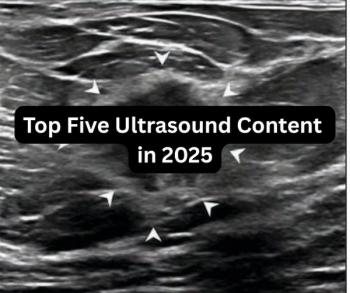Could computed tomography colonography (CTC) provide the most optimal combination of clinical efficacy and cost-effectiveness for colorectal cancer (CRC) screening?
In a simulated study, recently published in Radiology, researchers compared no CRC screening and multitarget stool DNA (mt-sDNA) testing to conventional CTC (CTCconv) and surveillance CTC (CTCsurv) for a hypothetical cohort of 10,000 45-year-old study participants. The CTCconv group would undergo polypectomy for all polyps > 6 mm every five years and the CTCsurv cohort would have three-year follow-up exams for polyps (6-9 mm) and polypectomy for polyps > 10 mm, according to the study.
In comparison to no CRC screening, the researchers found that screening with mt-sDNA (also known as Cologuard) reduced CRC incidence by 59 percent in comparison to 75 percent with CTCconv screening and 70 percent with CTCsurv screening.
Assuming 100 percent screening adherence, the study authors also projected that mt-sDNA, CTCconv and CTCsurv would lead to 72 percent, 80 percent and 82 percent reductions, respectively in mortality rates.
“Colorectal screening with noninvasive tests has the potential to substantially reduce the population incidence of colorectal cancer (CRC), providing safer options relative to primary optical colonoscopy (OC) screening,” wrote lead study author Perry J. Pickhardt, M.D., a professor in the Department of Radiology at the University of Wisconsin School of Medicine and Public Health in Madison, Wis., and colleagues.
The researchers also found that mt-sDNA screening had a discounted lifetime cost per person of $6,011 in contrast to $3,913 for CTCconv and $4,423 for CTCsurv.
“ … mt-sDNA testing remains the least effective and most costly strategy … and is not a cost-effective alternative to the more efficient and effective CTC strategies,” maintained Pickhardt and colleagues.
Three Key Takeaways
1. CTC screening offers superior efficacy. Compared to multitarget stool DNA (mt-sDNA) testing, both conventional and surveillance CTC strategies achieved greater reductions in CRC incidence (75 percent and 70 percent vs. 59 percent) and mortality (80 percent and 82 percent vs. 72 percent) in a simulated cohort.
2. Cost-effectiveness favors CTC over mt-sDNA. Lifetime per-person costs were lower for both CTC strategies ($3,913 for CTCconv and $4,423 for CTCsurv) than for mt-sDNA ($6,011), making CTC more cost-effective while being more clinically effective.
3. CTC Provides a balanced, noninvasive option for CRC screening. CTC offers a less invasive alternative to colonoscopy with better risk stratification than mt-sDNA, making it a potentially optimal middle-ground screening tool for CRC.
Emphasizing that stool-based screening targets existing cancers, the study authors said CTC screening offers better risk stratification with specifics on size and morphologic characteristics.
“CTC screening may provide an intermediate option between primary OC and mt-sDNA screening by avoiding the invasiveness of the former while still providing effective cancer prevention,” added Pickhardt and colleagues.
(Editor’s note: For related content, see “Incorporating CT Colonography into Radiology Practice,” “Could Lymph Node Distribution Patterns on CT Improve Staging for Colon Cancer?” and “Survey Results Reveal Doubling of CT Colonography Use During COVID-19 Pandemic.”)
In regard to study limitations, the study authors acknowledged that longitudinal changes with respect to screening modalities, costs and adherence were not evaluated with the simulation model. They also noted that the 6 to 9 mm polyps natural history was largely derived from CTC surveillance data from one facility.





























